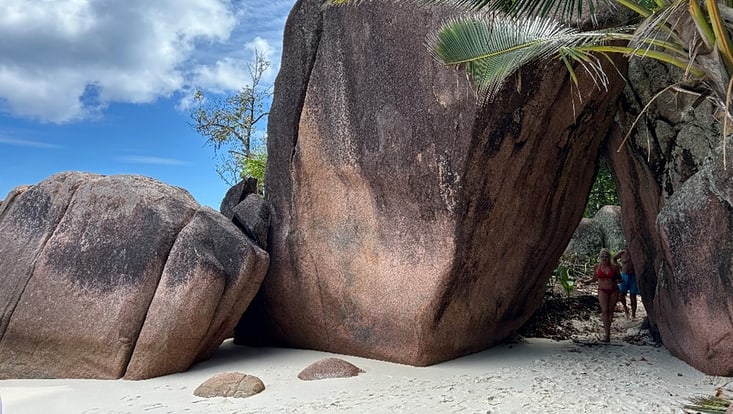Snapshot Seychelles No. 2
27 February 2025

Photo: B. Ratter
More than 750 million years ago, these granite blocks were formed. At that time, the Seychelles were part of a felsic microcontinent. About 145 million years ago, the blocks broke away from the ancient supercontinent Gondwana and isolated themselves in the Indian Ocean.
Beate Ratter, an expert in climate adaptation, is currently on site and reports:
“Today, the impressive rock formations along the white sandy beaches of La Digue Island attract tourists from all over the world. In addition to the approximately 120,000 residents, nearly 300,000 visitors arrive each year, requiring water and food while producing wastewater and waste – and almost everyone arrives by plane.
At the same time, tourism contributes nearly half of the Seychelles' economic output. Anse Source d'Argent beach is considered one of the most beautiful beaches in the world. It serves as a natural backdrop for countless self-staged photoshoots, overshadowing the sea, corals, and seagrass meadows teeming with fish. Hardly anyone thinks about climate change during these moments.”
